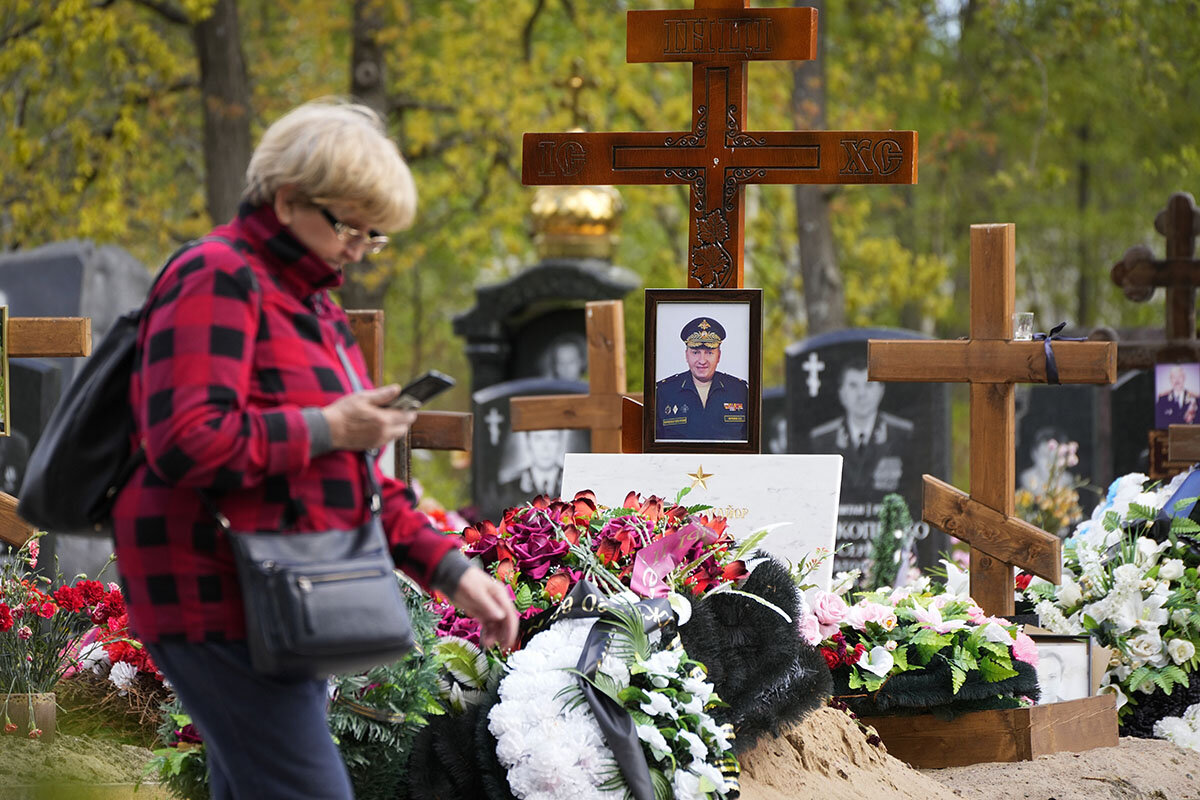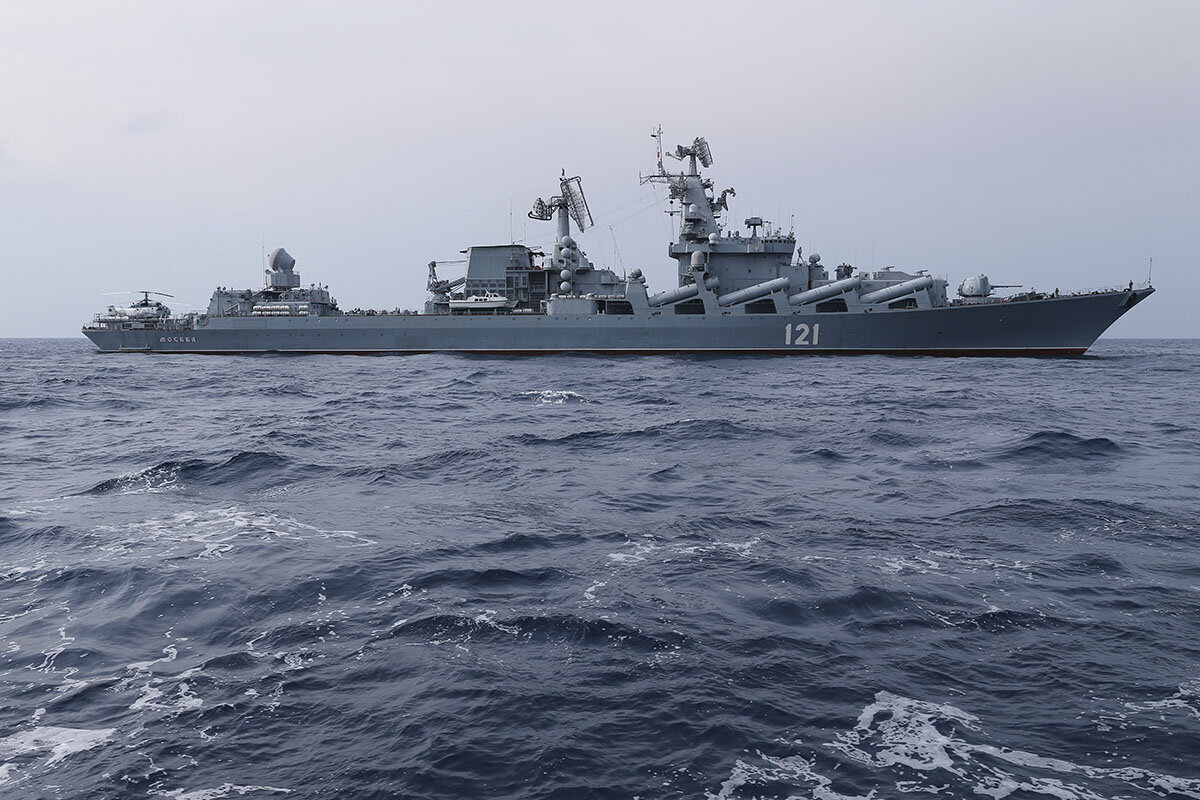How US military aids Ukraine with information, not just weaponry
Loading...
When a news story leaked last month that Washington is helping Ukraine kill Russian generals through United States intelligence tips, Pentagon officials quickly took to the podium to clarify a few things.
“We do not provide intelligence on the location of senior [Russian] military leaders on the battlefield, or participate in the targeting decisions of the Ukrainian military,” Pentagon Press Secretary John Kirby told reporters in a May 5 briefing.
The U.S. does indeed share secrets with Kyiv, which are “timely” as well as “useful,” to help the country defend itself, he said.
Why We Wrote This
What’s the responsible way to use military intelligence in aid of an ally? The sharing of U.S.-gathered secrets has already helped Ukraine in important ways, but officials also have reasons to be cautious.
“Certainly there is an element of curation” also involved before this classified information is passed along, to protect America’s spies and their methods.
Beyond that, U.S. officials declined to give more details – including refusing to answer a question about whether the intelligence involves Russian logistics or even weather forecasts – other than to say that Ukraine is “under no obligation to tell us how they’re going to use” this American information.
The episode is an illustration of the tricky line that the U.S. must walk in its intelligence sharing with Ukraine: providing enough to bolster Kyiv’s military defenses – and to satisfy U.S. lawmakers who complain that the Biden administration should be doing more – but not enough to reveal sensitive U.S. sources or goad Russian President Vladimir Putin into expanding the conflict to include NATO.
“This is administration policy: We’re telling Ukrainians ‘This is where Russian units are’ so they can defend themselves, not so they can kill Russian generals,” says Daniel Hoffman, who served as Moscow station chief for the CIA.
For Mr. Putin, this may be “a difference without a distinction,” he adds. “His generals are dead – but it’s not enough to start a nuclear war.”
“Pre-bunking” versus Russia
Though the U.S. has no desire to give Moscow a license to escalate, “We’re constantly signaling to Russia that we’re supporting the Ukrainians,” says Emily Harding, deputy director of the International Security Program at the Center for Strategic and International Studies and a former analyst at the CIA.
While not without risks, this is designed as a deterrent, she adds. “It’s saying to Putin, ‘We’re not going to make this easy, we’re going to keep the fight going, and it’s going to be disastrous for you and your military.’”
In the run-up to the Russian invasion, this included efforts to “pre-bunk” rather than scramble to debunk Moscow’s more outrageous claims. In the process, the U.S. has turned on the spigots of intelligence, sharing it with Kyiv and also with the press.
It marked a shift in thinking from earlier, more close-lipped policy of previous administrations and “seems to have been quite useful,” says Kristian Gustafson, deputy director of Brunel University’s Center for Intelligence and Security Studies in London.
Prior to the Russian invasion, U.S. officials warned of concerning troop formations, for example, which might normally be classified secrets, and also that Russia was producing a “very graphic” deep-fake video intended to drum up support for Mr. Putin’s invasion.
U.S. officials made intelligence public in the hopes of convincing allies that Mr. Putin was indeed planning to wage war in Ukraine – an event that British and American intelligence agencies were forecasting, but French officials were not.
At the same time, the U.S. has taken great care not to give away its own secret methods of collection to Ukrainian agencies that, though tenaciously fighting Moscow, are also riddled with Russian spies.
“That’s a serious concern with the Ukraine, because it’s been an [espionage] target of the Russians for decades,” Ms. Harding of CSIS says. “And the Russians are very good.”
“The question,” she adds, “is always how much can you share – in as much detail as possible – without sharing exactly how you know it.”
Intelligence officials faced just such a puzzle with the April sinking of the Moskva, the flagship of the Russian fleet, Dr. Gustafson says.
Russia claimed it was destroyed in a shipboard fire caused by detonated ammunition before it became clear it was struck by Ukrainian missiles – a severe blow to Russian pride.
Reports later emerged that U.S. intelligence had helped identify, though not target, the Moskva. “How did we or they know the ship was there? How did we or they know that the ship’s targeting radars were broken?” says Dr. Gustafson.
A lesson from World War II
After breaking German Enigma encryptions, Allies in World War II faced a similar challenge: how to act on intelligence while also ensuring that Berlin stayed in the dark about this new ability to intercept their coded communiques.
This meant, say, not attacking Axis convoys before flying a highly-visible Allied plane overhead, Dr. Gustafson notes.
In this way, Axis powers could conclude it was aerial reconnaissance, and not decrypted Enigma code, that gave their movements away.
In the case of the Moskva, a U.S. human intelligence source could have been talking to a chatty Russian shipyard worker who happened to mention that the Moskva’s tracking radars were working poorly or not at all, he adds. “That’s a nice bit of intelligence, but you have to come up with multiple ways of knowing things.”
This might mean, among other things, putting out word that the Americans had spotted the ship through satellite imagery or sentinel aircraft to conceal another targeting system they don’t want Russians to know they have.
In the wider war, although U.S. intelligence officials do not, as they have stressed, give Ukraine targeting information, “They might say, ‘We happen to have seen an awful lot of radio traffic emanating from this place just to the west of town X,” Dr. Gustafson says.
Ukraine might then decide to send an electronic warfare unit to have a quick listen. They might then determine the building is a headquarters with generals in it.
“Is that targeting information? No, you haven’t told them anything other than that.”
At the same time, not all Ukrainian intelligence coups are due to sophisticated tradecraft.
Much is the result of Russian forces making rookie mistakes that allies are using to their advantage, notes Javed Ali, associate professor at the University of Michigan’s Gerald R. Ford School of Public Policy and a former intelligence officer with the Pentagon’s Defense Intelligence Agency.
“Intelligence doesn’t always have to be on the clandestine side – especially when Russian military commanders are using unsecured phone lines and social media platforms to communicate on the battlefield or back to Moscow,” he says.
Such intercepted communications, in particular when it comes to low-ranking Russian soldiers, are painting a picture of “young kids who are scared and not equipped and who hate fighting,” Mr. Ali adds.
Given this, when Russian soldiers are captured by Ukrainian forces on the battlefield, U.S. officials could help provide questions “that really smart analysts flush out” to come up with intelligence derived through empathetic, or at least thoughtful, interrogations.
“If you’re hearing the same story from soldiers in 20 different units, then you start to see patterns and trends emerge,” he says.
And as the war morphs from frequently changing battle lines to an increasingly entrenched slugfest, tactical intelligence becomes less important than understanding Mr. Putin’s strategic thinking, Mr. Ali says.
“What is Putin thinking? What will his next moves be? How will all this lead to an end-state that is satisfactory to both sides? That is where I think the role of intelligence is going to be very important,” he adds.
“And those are also the kind of insights that are hardest to get.”








